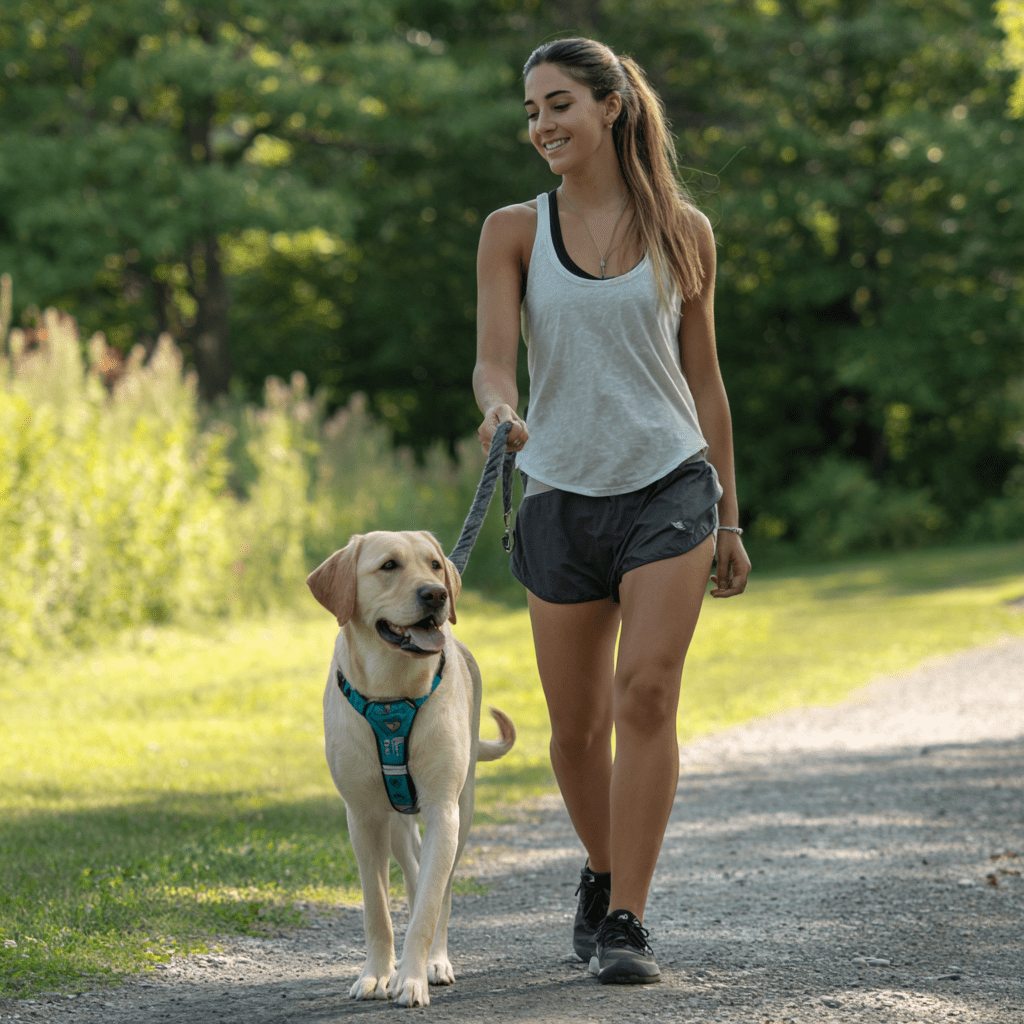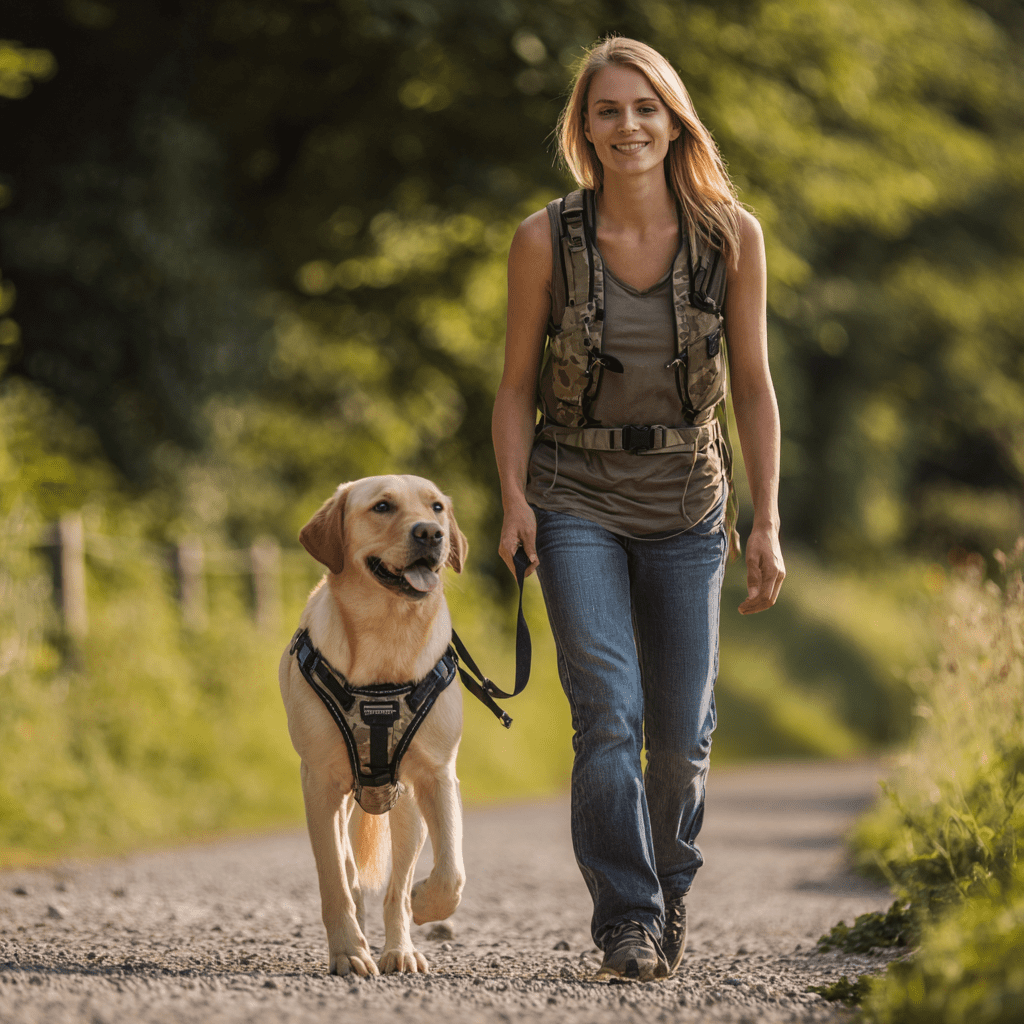Introduction
Walking your dog should be one of the most enjoyable parts of your day. But if your pup pulls like a sled dog, refuses to move, or gets distracted every two seconds, it can turn into a frustrating tug-of-war.
Leash training isn’t just about teaching your dog not to pull—it’s about creating a calm, safe, and cooperative walking experience. Whether you’re starting with an energetic puppy or re-training an adult rescue dog, the process is built on patience, consistency, and positive reinforcement.
In this guide, we’ll walk (pun intended) through the step-by-step method to go from chaos on a leash to a confident, well-behaved walking partner.
Why Leash Training Matters
- Safety: Prevents your dog from darting into traffic or dangerous areas.
- Control: Helps manage excitement around other dogs, people, and wildlife.
- Bonding: Walking together calmly builds trust and strengthens your relationship.
- Legal Compliance: Many cities have leash laws for public safety.
Step 1: Choosing the Right Equipment
Before you begin training, make sure you have the right tools:
- Leash: A standard 4–6 ft flat leash is ideal for training. Avoid retractable leashes—they encourage pulling.
- Collar or Harness:
- Flat Collar: Good for calm, well-behaved dogs.
- Front-Clip Harness: Helps reduce pulling for beginners.
- Head Halter: Useful for strong pullers but requires careful introduction.
- Treats: Small, soft, and high-value rewards to keep your dog motivated.
Pro Tip: Always ensure the collar or harness fits snugly but not too tight—you should be able to slip two fingers between the strap and your dog’s skin.
Step 2: Introducing the Leash Indoors
Before hitting the streets, let your dog get comfortable with the leash inside.
- Clip the Leash On: Let them wear it around the house under supervision.
- Reward Calm Behavior: Treat and praise when they ignore it rather than chew or paw at it.
- Short Indoor Walks: Practice walking a few steps at a time in a distraction-free environment.
This step builds a positive association with the leash before real outdoor challenges begin.
Step 3: Teaching “Follow Me” Without Pressure
One of the most important foundations for leash training is teaching your dog to follow you willingly.
- Stand still and wait for your dog to turn toward you.
- Say your cue word (like “Let’s go!”) and take a step forward.
- Reward when they follow without pulling.
Pro Tip: Keep the leash slack—avoid constant tension, as it teaches them to pull back.
Step 4: Starting Outdoor Training
When your dog is ready, move to a quiet outdoor area.
- Keep Sessions Short: 5–10 minutes to prevent overwhelm.
- Minimal Distractions: Start in a calm location before progressing to busier areas.
- Reward Often: Every few steps at first, gradually increasing the distance between rewards.
Step 5: Teaching Loose-Leash Walking
Loose-leash walking means your dog walks beside you without tension in the leash.
The “Stop-and-Go” Method:
- The moment your dog starts pulling, stop walking.
- Wait for them to turn back or loosen the leash.
- Reward and continue walking.
The “Change Direction” Method:
- If your dog pulls, turn and walk the opposite way.
- Praise when they follow.
- This teaches them to pay attention to your movements.
Step 6: Handling Distractions
Dogs are naturally curious—squirrels, smells, and other dogs can be irresistible.
- Use “Watch Me”: Teach your dog to make eye contact when distracted.
- Distance Management: If another dog excites them, create space before they become reactive.
- Reward Focus: Treat generously when they ignore distractions.
Step 7: Increasing Difficulty
Once your dog is doing well in quiet areas, slowly introduce new challenges:
- Different Environments: Parks, sidewalks, pet-friendly stores.
- Longer Walks: Gradually increase distance.
- Busier Times: Teach them to handle more foot traffic and noise.
Step 8: Addressing Common Leash Problems
Pulling Toward Something
Stop and wait until they calm down, then proceed.
Lagging Behind
Use an excited tone, clap, or offer a treat to encourage movement.
Lunging
Block their view, change direction, or use the “Watch Me” command before they lunge.
Step 9: Maintaining Good Habits

Training doesn’t stop once they “get it.” Keep reinforcing good leash manners:
- Reward occasionally to maintain motivation.
- Practice short training sessions weekly.
- Correct bad habits immediately before they become routine.
Step 10: Enjoying Stress-Free Walks
When done right, leash training turns walks from a battle into a bonding experience. A leash-trained dog:
- Walks calmly without pulling.
- Responds to your cues and direction changes.
- Is safe and relaxed in various environments.
Pro Tips for Faster Success
- Be Consistent: Everyone who walks the dog must follow the same rules.
- Stay Patient: Training takes time—don’t rush the process.
- Use High-Value Treats: Especially for big distractions like other dogs.
- End on a Positive Note: Always finish with a success to keep your dog excited for the next walk.
Common Mistakes to Avoid
- Using a Retractable Leash During Training: Encourages pulling.
- Yanking on the Leash: Causes fear and damages trust.
- Training Too Long: Overloads your dog’s attention span.
- Ignoring Small Pulls: Even minor pulling can become a habit.
Conclusion
Leash training is a journey, not a race. Whether you’re guiding a wiggly puppy or re-training an adult dog, patience and consistency will pay off. Follow these steps, reward good behavior, and you’ll soon enjoy calm, stress-free walks with your canine companion—no tug-of-war required.
